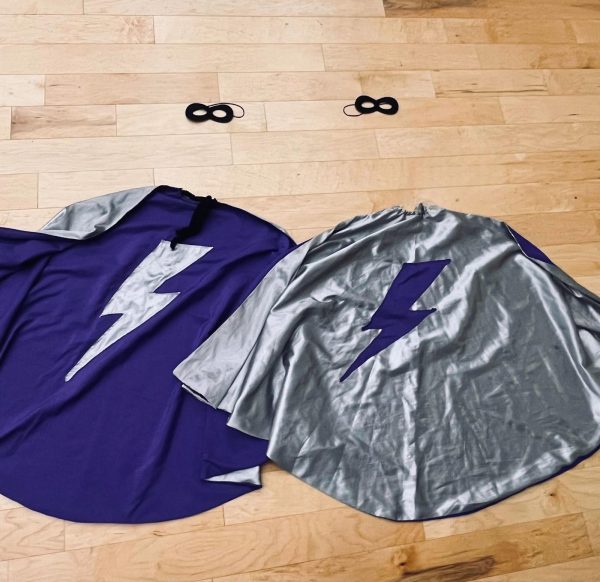How to Afford College as a Veteran
A freelance piece sent to the Live Wire from Bankrate on how to afford college as a veteran.
A freelance piece sent to the Live Wire from Bankrate on how to afford college as a veteran.
For veterans, college can be a stepping stone from service back to civilian life. It can also unlock more job prospects and higher-paying jobs. College is expensive, but there are ways to cut back on costs. From tailored scholarships and grants to federal benefits and programs, veterans have a plethora of resources at their disposal to make earning a degree more affordable. Here’s how you can afford college as a veteran and make the most out of the benefits provided to you.
To read more about information on this topic: go to Bankrate’s website for more details
Affording college as a veteran
As a veteran, you have financial aid options that aren’t available to other students. Look into all of your options to make college as affordable as possible.
The GI Bill
If you were an active service member for at least 90 days after 9/11, received a Purple Heart and were honorably discharged after 9/11 or served for at least 30 continuous days and were honorably discharged after 9/11, you could qualify for higher education benefits through the Post-9/11 GI Bill.
Offered by the Department of Veterans Affairs (VA), the bill provides monetary benefits for up to 36 months for the following expenses:
- Tuition and fees: You may qualify for up to the full cost of public, in-state tuition and fees. Rates are capped for private or foreign schools.
- Housing: If you’re in school at least half time, you can receive housing funds based on the average cost of living where your school is located.
- Books and supplies: You can receive up to $1,000 per year for course materials and supplies.
- Relocation: If you live in a county with six people or fewer per square mile and you’re moving at least 500 miles to go to college or have to fly by plane to your new location, you’re eligible to receive a one-time payment of $500.
The amount that you receive depends on how many months you served on active duty and other factors. You’re eligible for 100 percent of the bill benefits if you meet one of the following criteria:
- You served on active duty and were awarded a Purple Heart on or after Sept. 11, 2001.
- You were discharged for a service-related disability after serving on active duty at least 30 continuous days.
- You served on active duty for at least 36 months.
If you don’t meet these requirements, the percentage of how much you’re eligible to receive depends on how long you served on active duty. You can apply for the GI Bill on the VA’s website, by mail, in person at a VA regional office or with the help of a VA representative.
The Yellow Ribbon Program
If you qualify for 100 percent of the GI Bill benefits, you could be eligible for the VA’s Yellow Ribbon Program. This program covers expenses that the GI Bill doesn’t, like tuition and fees at a private or foreign school or the remaining tuition past the VA’s cap for attending a public school as an out-of-state-student.
If you qualify, your school will contribute the award amount toward your tuition costs in the form of scholarships or grants. The VA will then match the school’s award money. Not all schools offer the Yellow Ribbon Program; to find out if your school has it, you can search for it on the VA’s database.
To apply for this program, you must first apply for the GI Bill. Then you can apply through your school’s office of financial aid or with military liaison. Whether you qualify and how much you get depends on a few factors, including:
- How many students are already enrolled in the program: Schools have a limited capacity for enrollment in the program. Enrollment is on a first-come, first-served basis, so apply as soon as possible at the start of the academic year.
- Your tuition costs: Unlike with the GI Bill, your school decides how much aid you’re eligible to receive. They’ll determine this by adding up your tuition and fees and subtracting any other financial aid you’ve received.
Tuition waivers and discounts
Many states offer free-tuition waivers and discounts for veterans, allowing you to save your VA program-related funding for advanced degree courses.
Some states that offer tuition waivers or discounts are Alabama, Arizona, Connecticut, Florida, Illinois, Indiana, Maryland, Massachusetts, Montana, New Mexico, New York, Rhode Island, South Dakota, Tennessee, Texas, Utah, Washington, West Virginia, Wisconsin and Wyoming.
Each state offers varying waiver amounts and has its own set of eligibility and application requirements. For application information, visit your state’s Veterans Affairs website or contact your school’s office of financial aid.
Scholarships and grants
Scholarships and grants are a great way to fill the funding gaps after exhausting your VA and state higher education benefits. There are hundreds of scholarships and grants offered to veterans that are sponsored by federal, state and local governments, nonprofit organizations, private corporations and military associations.
To start, you should fill out the Free Application for Federal Student Aid (FAFSA). This will give you an idea of any federal and state grants you qualify for. In your financial aid award letter, your college may also list institutional scholarships that you qualify for.
However, you can also conduct your own search for free funding. One of the best ways to find scholarships is through a scholarship search engine. Search engines can help you sift through millions of scholarships to find those tailored to veterans. You can also apply for scholarships specific to your degree, field of study, specific hobbies or niche interests.
Student loans
Student loans are a common form of financial aid that can be used to cover educational expenses, like tuition, room and board, technology, books and supplies.
Federal student loans are offered by the U.S. Department of Education and should be the first place you turn if you’re interested in borrowing money. These loans are available through the FAFSA and come with low-interest rates, many repayment plans and benefits specific to members of the military and veterans.
Private student loans, on the other hand, are available through online lenders, banks and credit unions. In order to qualify for most private loans, you need to be in good financial standing or have a co-signer who is. The interest rate you’re offered is based on your creditworthiness, so it’s best to shop around with a few lenders before applying. The main benefit of private loans is that these interest rates can be extremely low if you have good credit, and most don’t have borrowing limits.
Work-study programs
While work-study is available to many students who fill out the FAFSA, the VA offers its own work-study program for veterans. With veterans work-study, you get to work a VA-approved part-time job while attending school. You’ll earn an hourly wage — either the federal minimum or the state minimum, whichever is higher — and you can work a total number of hours up to 25 times the number of weeks in your enrollment period.
To qualify for the program, you must meet the following criteria:
- Be enrolled at least three-quarter time in a college degree, vocational or professional program.
- Have found an open job at a VA facility or in a VA-related role at your school.
- Are able to fulfill the work-study requirements while you still qualify for education benefits.
- Are enrolled in an approved VA education benefits program to help pay for your college degree. This could include the Post-9/11 GI Bill, the Veterans’ Educational Assistance Program, the National Call to Service and more.
To apply for the program, you’ll need to fill out an Application for Work-Study Allowance (VA Form 22-8691). For more information about the program or application, contact your VA regional processing office.
The bottom line
As a veteran, you have unique financial aid opportunities that no other students have. That’s why it’s so important to first take advantage of the VA and school-sponsored programs available exclusively to you; not only will they have a smaller application pool, but they’re your best bet at significantly reducing higher education costs.
If you don’t qualify for these benefits, consider all of the other financial aid options available and conduct a financial audit to determine which route will be best for your finances in the long run. Paying for college can be challenging, but for many, that cost is worth it when entering a civilian career.













